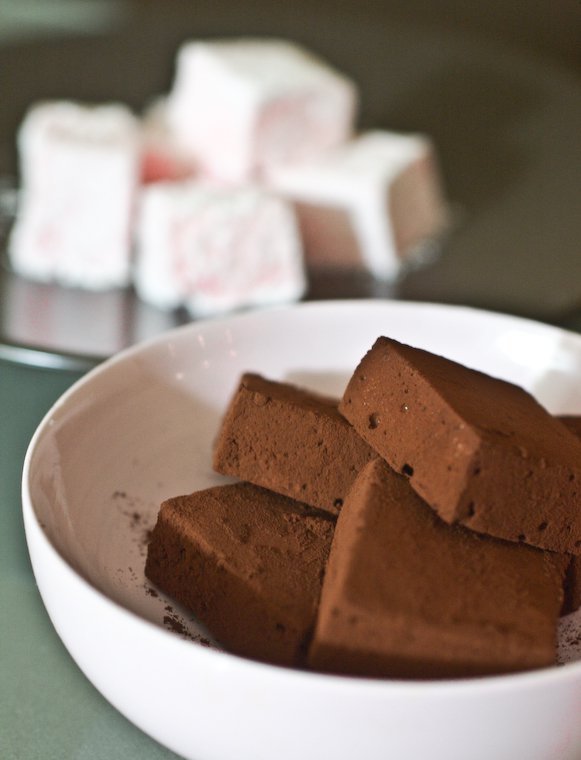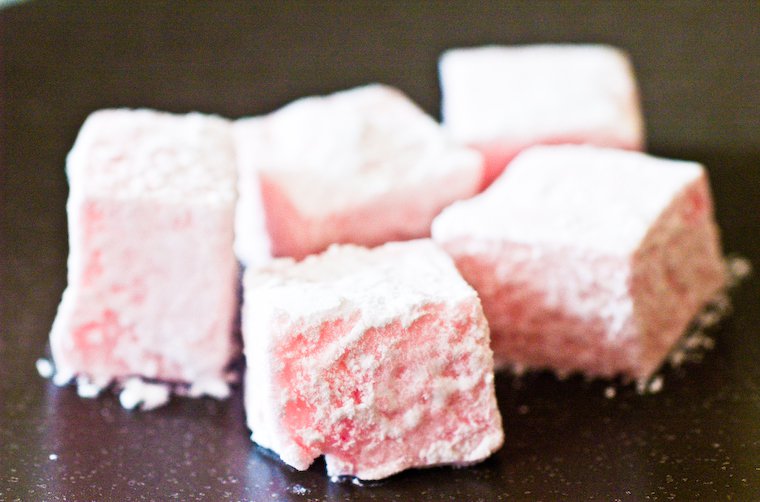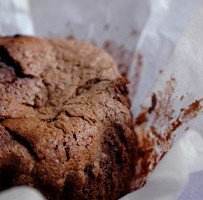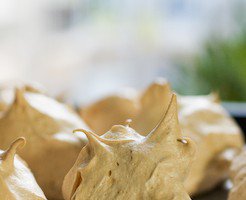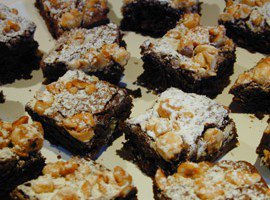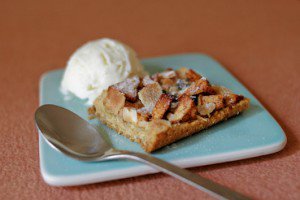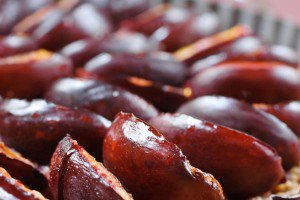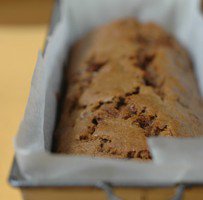Guimauve — the French marshmallows — is the stuff clouds are made of. They have the soft and cottony flavor of childhood, and resistance is futile when I spot the pretty pastel cubes in pastry shops.
Rarely am I disappointed, but I do have to mention this one recent time when I bought an assortment from Pain de Sucre and got mostly weirdo flavors nobody in their right mind would want in their marshmallows — I’m talking chicory and whiskey, angélique, or saffron and chili pepper. I mean, really, I’m as open-minded as the next person, but what’s next: reblochon? Fortunately, I’d had the wisdom to get a few of their coconut-coated chocolate marshmallows as well, so I was able to make it up to my seriously shaken palate.
Painful memories aside, guimauve has been a long-time resident on my make-my-own list. I’ve been collecting recipes for French marshmallows for years like they were butterflies, but never actually followed through. Why? Because they all called for sirop de glucose, a thick glucose syrup that’s dearly loved by professional pastry chefs but has yet to become a home baking staple. I know where to find it, but I don’t feel like buying a 2-pound tub just to make marshmallows.
Guimauve is the stuff clouds are made of. It has the soft and cottony flavor of childhood, and resistance is futile when I spot the pretty pastel cubes in a pastry shop.
And then one day, Christophe Michalak came along and showed me the way. As part of the publicity for his recent book C’est du gâteau !, an interview of him appeared in ELLE, along with his basic recipe for guimauve. And, miracle or miracles, that recipe called for honey, not glucose syrup.
I clipped it and threw out all the others*.
Rose and chocolate are Maxence’s and my favorite guimauve flavors, respectively, so my plan was to make a single batch and flavor one half with rose syrup, the other with cocoa powder, guestimating the amounts of flavoring because the printed recipe didn’t include these measurements.
The whole project worked out so well I had to pinch myself to believe I had really brought into this world such ideally fluffy cubes of French marshmallow perfection (rather than sleepwalked to the nearest pâtisserie and pillaged their stock).
And if my datebook is to be trusted, it seems Valentine’s Day is around the corner, so if you’re the sort who gives a fig, this might just be the perfect gift. You can dream up endless variations in terms of flavoring and coating to match your sweetheart’s tastes: I recommend orange blossom water and fruit purées of all sorts, and chocolate-dipping is always a winning strategy.
Don’t be intimidated by the length of the recipe; it’s not difficult at all. The version that was published in ELLE had been streamlined in the extreme to fit the narrow side bar, but I reincorporated as much detail as I thought would be useful to a first-time guimauve-maker.
* I’m kidding. I would never throw out a recipe.

Have you tried this? Share your pics on Instagram!
Please tag your pictures with #cnzrecipes. I'll share my favorites!
Ingredients
- 14 grams (1/2 ounce) sheet gelatin
- 3 egg whites
- 40 grams (2 rounded tablespoons) honey
- 230 grams (1 cup plus 2 tablespoons) sugar
- 4 teaspoons rose syrup (substitute rose water)
- 4 teaspoons unsweetened cocoa powder, dissolved in a small bowl with 1 tablespoon hot water
- 2 tablespoons confectioner's sugar
- 2 tablespoons potato or corn starch, sieved
- 1/4 cup unsweetened cocoa powder, sieved (substitute sweetened grated coconut)
Instructions
- Line a square 20 by 20-cm (8 by 8-inch) baking dish with parchment paper (alternatively, you can use two loaf pans or small silicon molds).
- Place the gelatin sheets in a bowl of cold water to soften. Have the egg whites ready in the bowl of a stand mixer, or in a mixing bowl if you're going to use an electric whisk. (I don't recommend doing this by hand, unless you have wrists of steel and the stamina of a marathon runner.)
- Combine the honey, sugar, and 90 ml (6 tablespoons) water in a medium saucepan. Bring to a simmer over medium heat, stir to dissolve, and keep at a simmer for 8 minutes. Remove from heat.
- Squeeze the gelatin sheets with your hands to drain them as thoroughly as you can. Add them to the syrup, and stir with a wooden spoon until completely dissolved. Cover and keep warm.
- Beat the egg whites until soft peaks just begin to form. With the beater still on, add the hot syrup in a slow, steady stream, and keep whisking until the mixture cools down to just above room temperature.
- Transfer half of the egg white mixture to a second mixing bowl, and whisk in the rose syrup quickly. Add the dissolved cocoa powder to the remaining egg white mixture and whisk it in without overbeating.
- Pour the rose mixture on one side of the prepared pan, the chocolate mixture on the other (they will meet in the middle, that's okay), and even out the surface with a spatula. Cover lightly with a sheet of parchment paper (without pressing on the surface) and let stand somewhere cool for 24 hours.
- Combine the confectioner's sugar and potato starch in a wide, shallow bowl. Put the cocoa powder in a second bowl of similar shape.
- Have ready a mug of very hot water. Lift the parchment paper to remove the guimauve from the pan, and transfer the whole thing carefully to a cutting board, and cut the guimauve into squares, using a sharp knife that you'll dip in the mug to keep the blade warm.
- Transfer the cubes of guimauve three at a time, using your fingers to separate them delicately, into one of the prepared bowls (the rose-flavored ones in the confectioner's sugar ; the chocolate-flavored ones in the cocoa powder), and coat them well. The cubes will have a maddening tendency to stick to one another, to your fingers, and to the bowl (the top surface is especially sticky), so keep them separate and handle them lightly.
- Once coated, set the cubes aside on a plate, and leave them out to dry for 2 or 3 hours, flipping them halfway through. Transfer them to a fine-mesh sieve a handful at a time, and shake over the sink to remove the excess confectioner's sugar or cocoa powder.
- Package them up and give them away, or hide under the stairs and eat them all by yourself. Guimauve keeps for a few days at room temperature in an airtight container.
